 Image 1 of 17
Image 1 of 17

 Image 2 of 17
Image 2 of 17

 Image 3 of 17
Image 3 of 17

 Image 4 of 17
Image 4 of 17

 Image 5 of 17
Image 5 of 17

 Image 6 of 17
Image 6 of 17

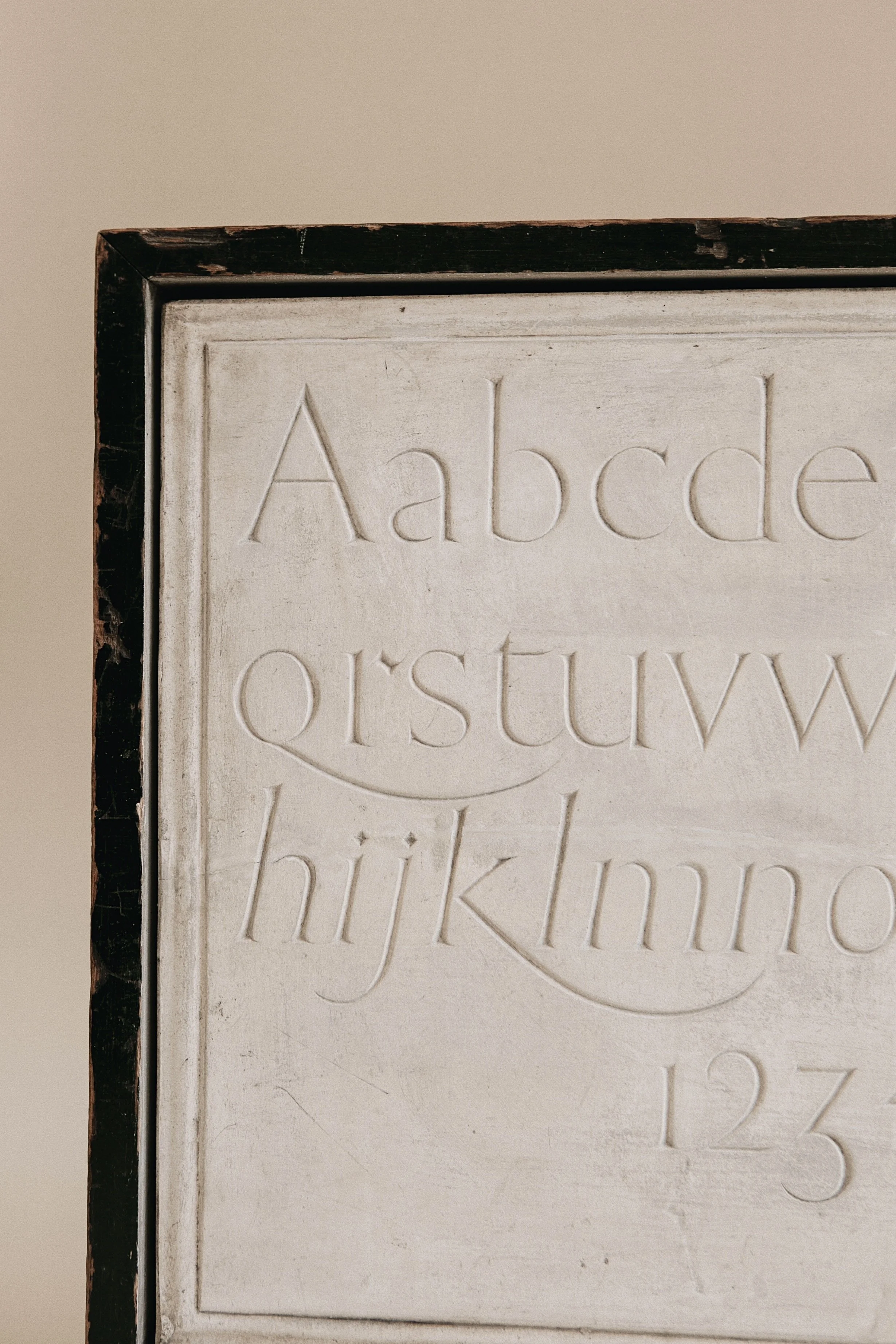 Image 7 of 17
Image 7 of 17

 Image 8 of 17
Image 8 of 17

 Image 9 of 17
Image 9 of 17

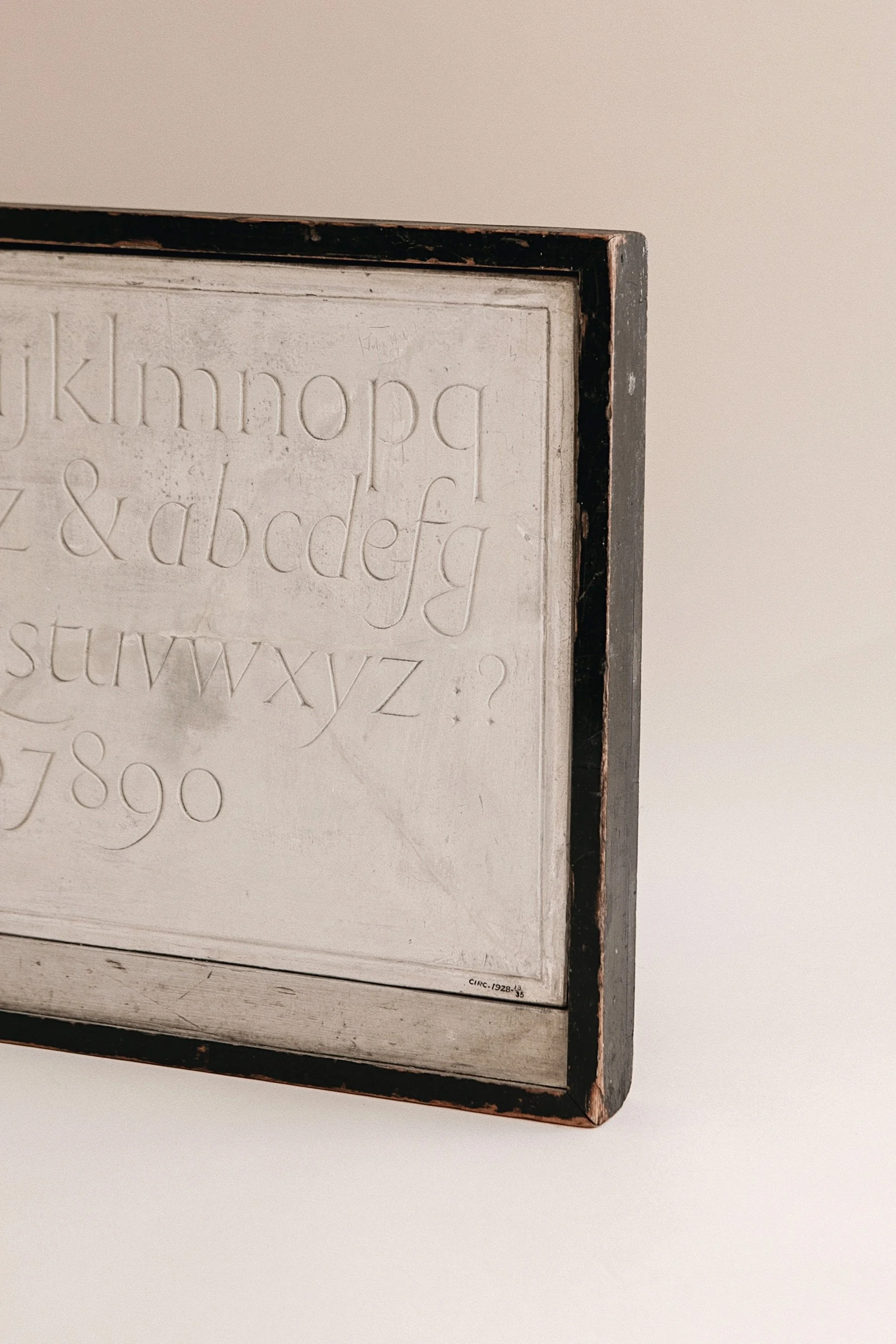 Image 10 of 17
Image 10 of 17

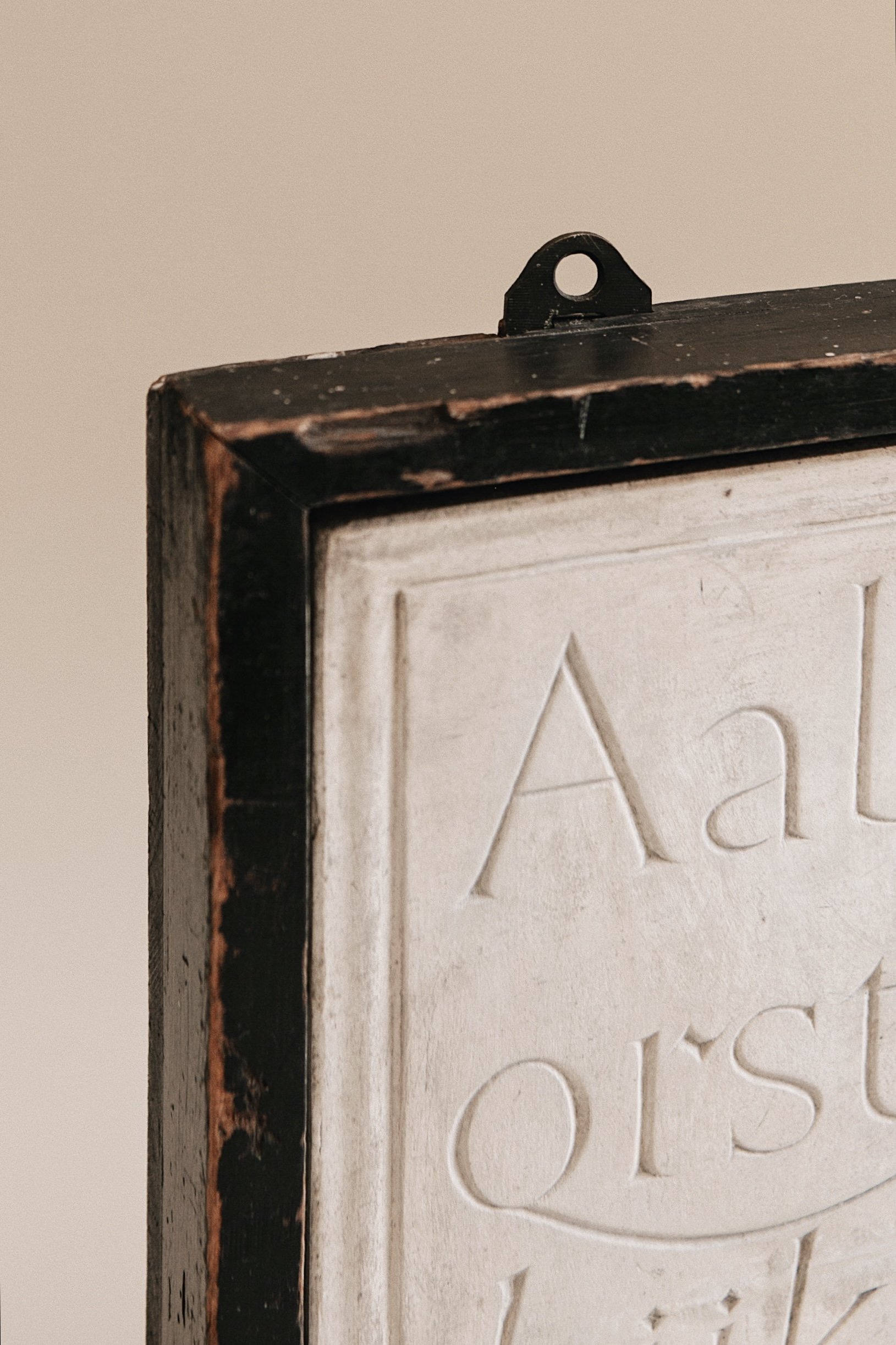 Image 11 of 17
Image 11 of 17

 Image 12 of 17
Image 12 of 17

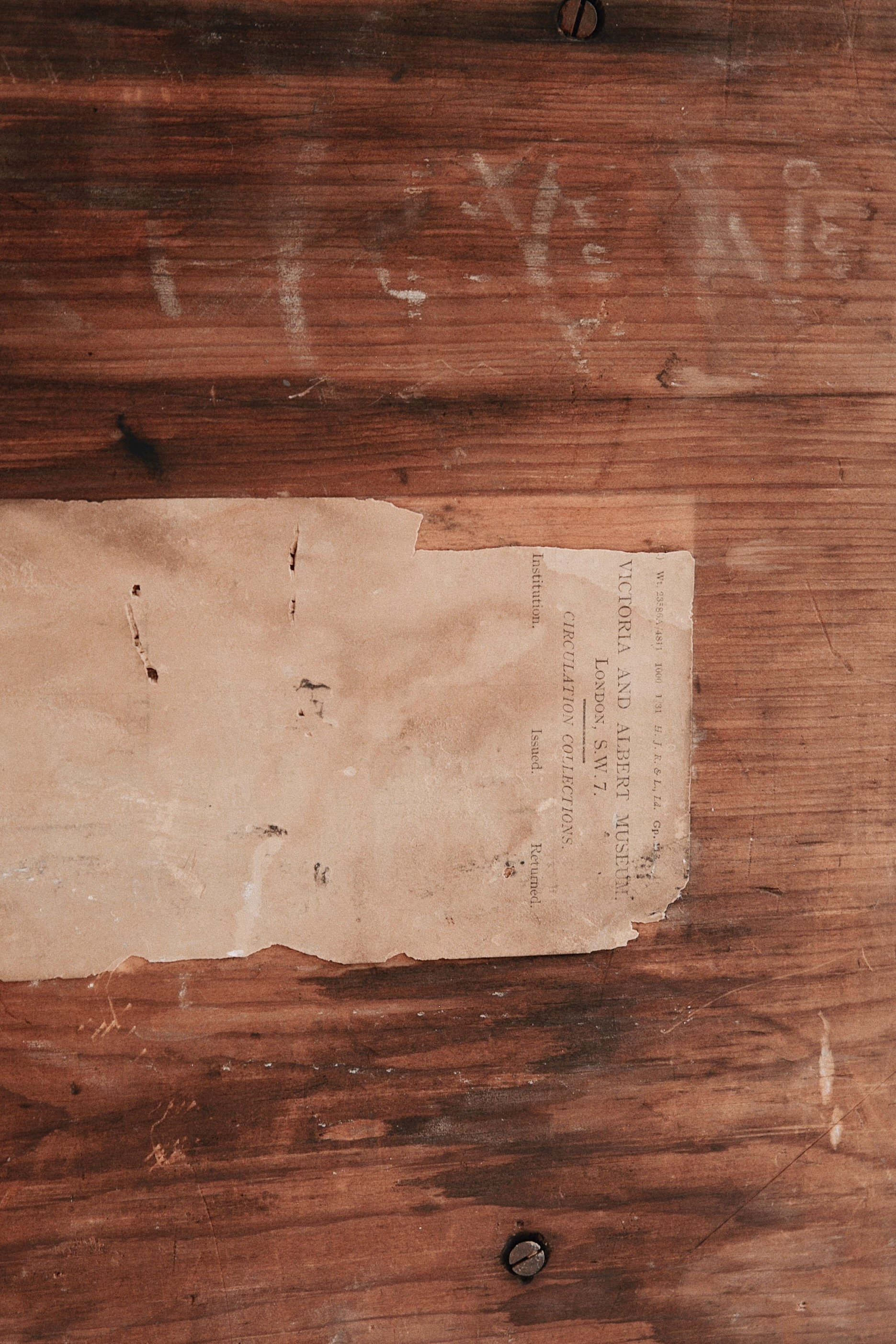 Image 13 of 17
Image 13 of 17

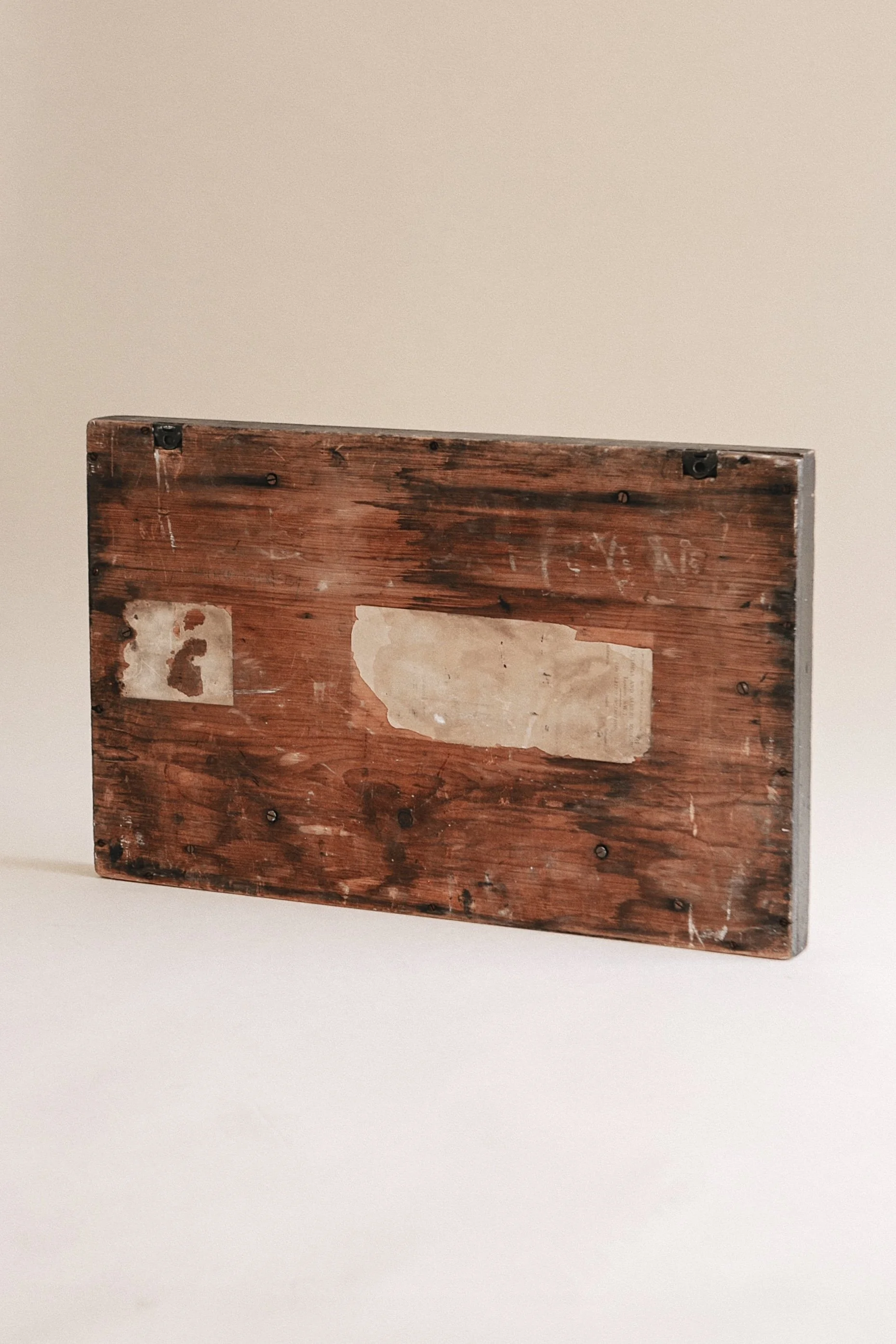 Image 14 of 17
Image 14 of 17

 Image 15 of 17
Image 15 of 17

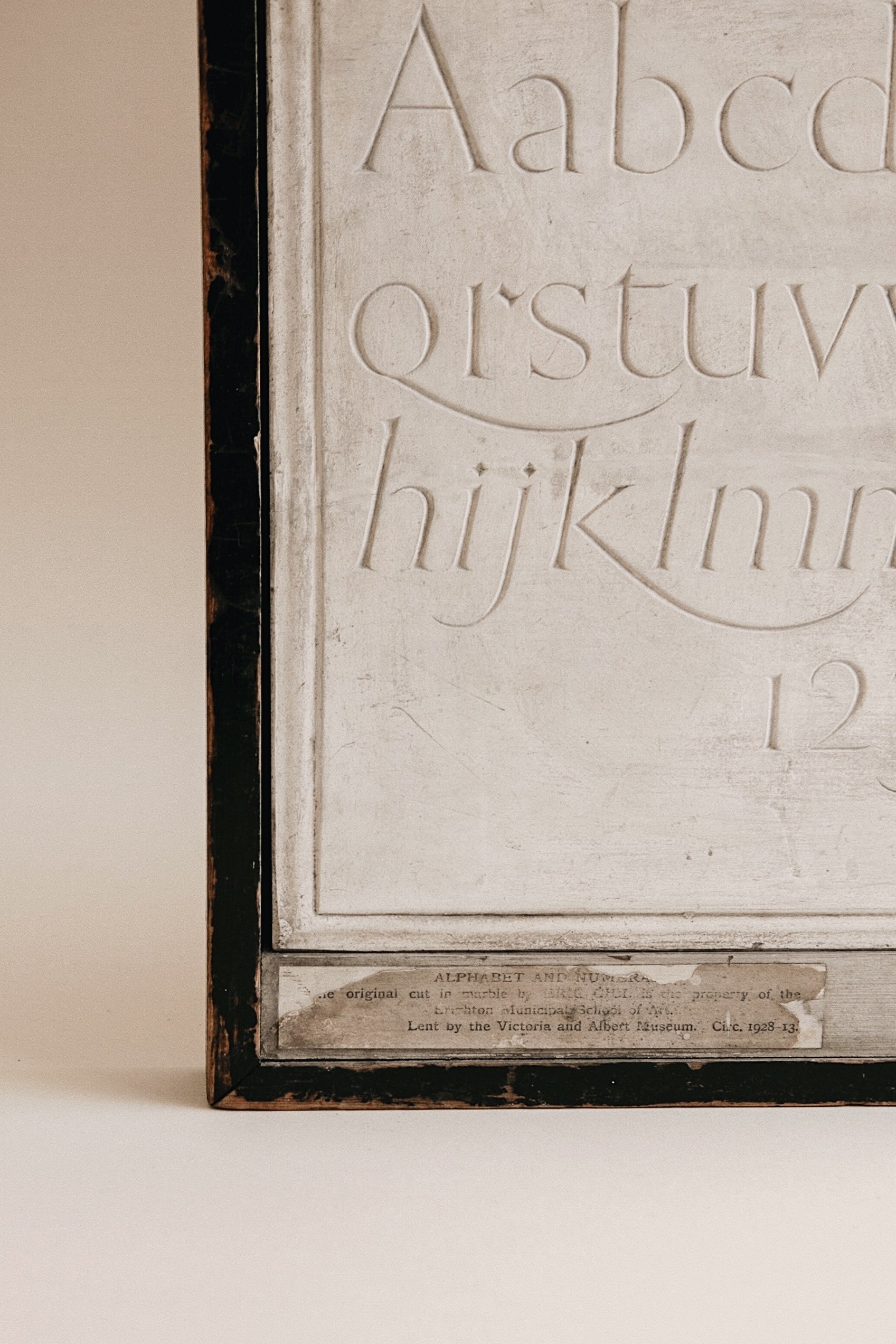 Image 16 of 17
Image 16 of 17

 Image 17 of 17
Image 17 of 17


















Eric Gill (1882 - 1940) Alphabet
A rare Eric Gill (1882 - 1940) alphabet panel in plaster.
In 1909 Gill collaborated with Eric Johnston on Manuscript & Inscription Letters for the Use of Craftsmen, a loose‑leaf portfolio of sixteen plates published that September. For this, Gill carved two Hoptonwood stone panels with alphabets and numerals – one in raised letters and numbers, the other in incised italics which were then photographed for inclusion in the portfolio. The italic version was cast in plaster by C. Smith and Sons of Kentish Town and sold to lettering students, influencing generations of designers and calligraphers.
The present panel, larger than the published portfolio example, indicates that Gill carved an additional stone alphabet panel in 1909, from which this plaster edition was produced by the same Kentish Town mould makers. Its elegant, flowing italic script embodies the fusion of classical discipline and Arts and Crafts ideals that made Gill one of the most important letter cutters of his era.
Gill’s artistic achievements in lettering, type design, and sculpture remain profoundly influential, from the creation of the Perpetua and Gill Sans typefaces to his work on the Stations of the Cross at Westminster Cathedral. Yet his legacy is deeply complicated. Revelations about his troubling personal life, including documented sexual abuse, have prompted searching reassessment of his reputation. Institutions and scholars increasingly grapple with how to present and contextualise Gill’s work, balancing its undeniable aesthetic and historical significance with the gravity of his actions.
The panel itself is an object of historic and artistic importance, while its creator’s life raises serious ethical questions. Viewing Gill’s work today requires both an appreciation of its craft and an awareness of the complex, often uncomfortable realities behind its making.
Carved C1909 and cast C1928, England.
57cm x 32cm.
With thanks to Dr Judith Collins for her information in compiling this description.
Condition - Some age related repairs, touch ups and small cracks. Structurally sound and in its original period frame.
Literature
Bonhams Modern British and Irish Art, November 2015. Lot 38. See here.
A wonderful video by Art Dealer, Phillip Mould talking about this casting here.
A rare Eric Gill (1882 - 1940) alphabet panel in plaster.
In 1909 Gill collaborated with Eric Johnston on Manuscript & Inscription Letters for the Use of Craftsmen, a loose‑leaf portfolio of sixteen plates published that September. For this, Gill carved two Hoptonwood stone panels with alphabets and numerals – one in raised letters and numbers, the other in incised italics which were then photographed for inclusion in the portfolio. The italic version was cast in plaster by C. Smith and Sons of Kentish Town and sold to lettering students, influencing generations of designers and calligraphers.
The present panel, larger than the published portfolio example, indicates that Gill carved an additional stone alphabet panel in 1909, from which this plaster edition was produced by the same Kentish Town mould makers. Its elegant, flowing italic script embodies the fusion of classical discipline and Arts and Crafts ideals that made Gill one of the most important letter cutters of his era.
Gill’s artistic achievements in lettering, type design, and sculpture remain profoundly influential, from the creation of the Perpetua and Gill Sans typefaces to his work on the Stations of the Cross at Westminster Cathedral. Yet his legacy is deeply complicated. Revelations about his troubling personal life, including documented sexual abuse, have prompted searching reassessment of his reputation. Institutions and scholars increasingly grapple with how to present and contextualise Gill’s work, balancing its undeniable aesthetic and historical significance with the gravity of his actions.
The panel itself is an object of historic and artistic importance, while its creator’s life raises serious ethical questions. Viewing Gill’s work today requires both an appreciation of its craft and an awareness of the complex, often uncomfortable realities behind its making.
Carved C1909 and cast C1928, England.
57cm x 32cm.
With thanks to Dr Judith Collins for her information in compiling this description.
Condition - Some age related repairs, touch ups and small cracks. Structurally sound and in its original period frame.
Literature
Bonhams Modern British and Irish Art, November 2015. Lot 38. See here.
A wonderful video by Art Dealer, Phillip Mould talking about this casting here.
